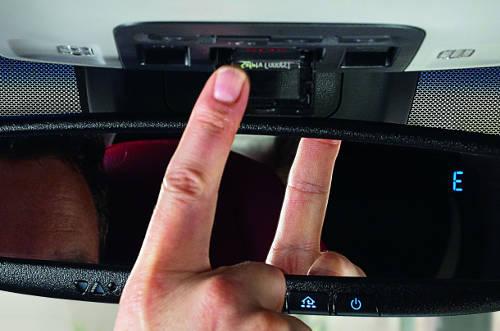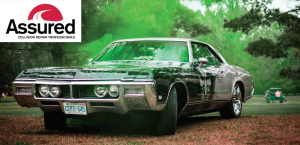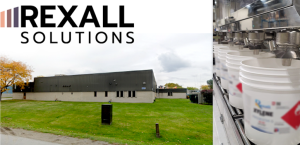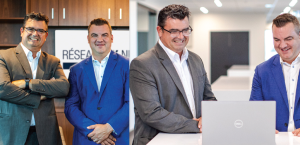Paul Stella is the Collision Repair and Refinish Manager for Toyota Canada. Stella recently sat down with Collision Repair magazine to discuss construction details on new models, updates to Toyota Safety Sense/Lexus Safety Systems+ and the difference between customer service and customer satisfaction.
Collision Repair magazine: Broadly speaking, what can we expect from Toyota and Lexus in 2018?
Paul Stella: Recently, Toyota introduced the all-new 2018 C-HR and launched a completely redesigned 2018 Camry. Lexus also added the 2018 LC to its lineup, and an entirely transformed 2018 LS will go on sale in Canada early next year. These new models were built using the Toyota New Global Architecture and the Global Architecture-Luxury platforms. This new approach to platform and powertrain design uses ultra-high strength steel for the body and lightweight materials (aluminum and carbon fibre) on select models to reduce weight, increase body rigidity, deliver superior handling and more dynamic performance. In models such as the Lexus LC, the use of self-piercing riveting allows these different metals to be securely joined where traditional welding methods are unsuitable in place of spot-welding.
Several other Toyota and Lexus models have also been refreshed for model year 2018, including the Toyota Yaris Hatchback, Prius c, Sienna, Sequoia, Tundra, and the Lexus NX.
Almost our entire lineup of 2018 models are equipped with standard Toyota Safety Sense or Lexus Safety System+ packages, which may include active safety features such as Pre-Collision System (with Pedestrian Detection), Lane Departure Alert, Automatic High Beams, and Dynamic Radar Cruise Control.
Toyota Entune and Lexus Enform – a new suite of advanced in-vehicle connectivity services – are also available on some of our 2018 models. These technologies help drivers stay connected with apps that provide access to Slacker, Yelp, sports, stock results, fuel prices and more. Safety Connect is also available on some 2018 models, which may include automatic collision notification, stolen vehicle locator, an emergency assistance button and enhanced roadside assistance.
For more details visit Toyota.ca or Lexus.ca.
-Paul Stella
CRM: How do these new construction techniques and safety features impact the repair industry?
PS: It is important for collision repair professionals to research Toyota/Lexus repair procedures found in the Toyota Information System (TIS) as part of the repair plan so that accurate estimates are written and approved by the bill payers, and so that repair technicians follow proper repair procedures. Several safety features found in Toyota/Lexus vehicles will require calibration, initialization or even a test drive after a repair to ensure proper operation. More information about Techstream and TIS is available at techinfo.toyota.com.
CRM: What challenges does Toyota foresee in the collision industry?
PS: Newer vehicles are being repaired using techniques and procedures that may have been suitable five to 10 years ago, but may no longer apply to today’s vehicles, especially with the introduction of materials such as high-strength steels, aluminum and carbon fibre.
Another example is windshield replace ment. Just a few years ago windshield replace ment was a straightforward repair. Today, the windshield can have a heads-up display imbedded in the glass and mounted cameras that form part of the advanced safety systems. As a result of these complex features, Toyota only supports the use of Genuine Toyota/Lexus parts for repair. The camera, once removed and re-installed, requires calibration using Toyota/Lexus scan tools, Techstream, and special targets. If proper calibration of the camera is not performed, it’s possible that the Toyota Safety Sense/Lexus Safety Systems+ systems may give false or inaccurate warnings and not operate as originally designed.
CRM: You’ve mentioned before that there’s a difference between customer service and customer satisfaction when it comes to autobody repair. How are they different?
PS: I get the opportunity to travel to many collision centres in Canada and the US and I see things that the collision industry does well and things that can be improved. I see customer satisfaction and customer service as separate items.
The collision industry does a great job providing customers with amenities that may enhance satisfaction, including free Wi-Fi, refreshments, nice waiting areas and keeping them informed during the repair process. They often employ friendly staff and give customers on-time delivery, loaner cars or alternate transportation, and the vehicles are usually washed and often detailed before being given back to the owner. But customer satisfaction is more than these experiences.
Customer service, on the other hand, is the process of catering to customers’ needs through professional services – and this is where I see the collision industry can improve. This includes items such as pre- and post-repair scans or health checks; road tests after the repairs are complete, calibration of electronic systems, the use of an OEM scan tool, researching and following OEM repair procedures, having the proper tools and equipment, using Genuine Parts and training from the OEM or I-CAR. And for facilities not already doing this, parts carts are a great solution for storing damaged and new parts during vehicle repairs to avoid leaving these parts being stored in or on the vehicles.





































